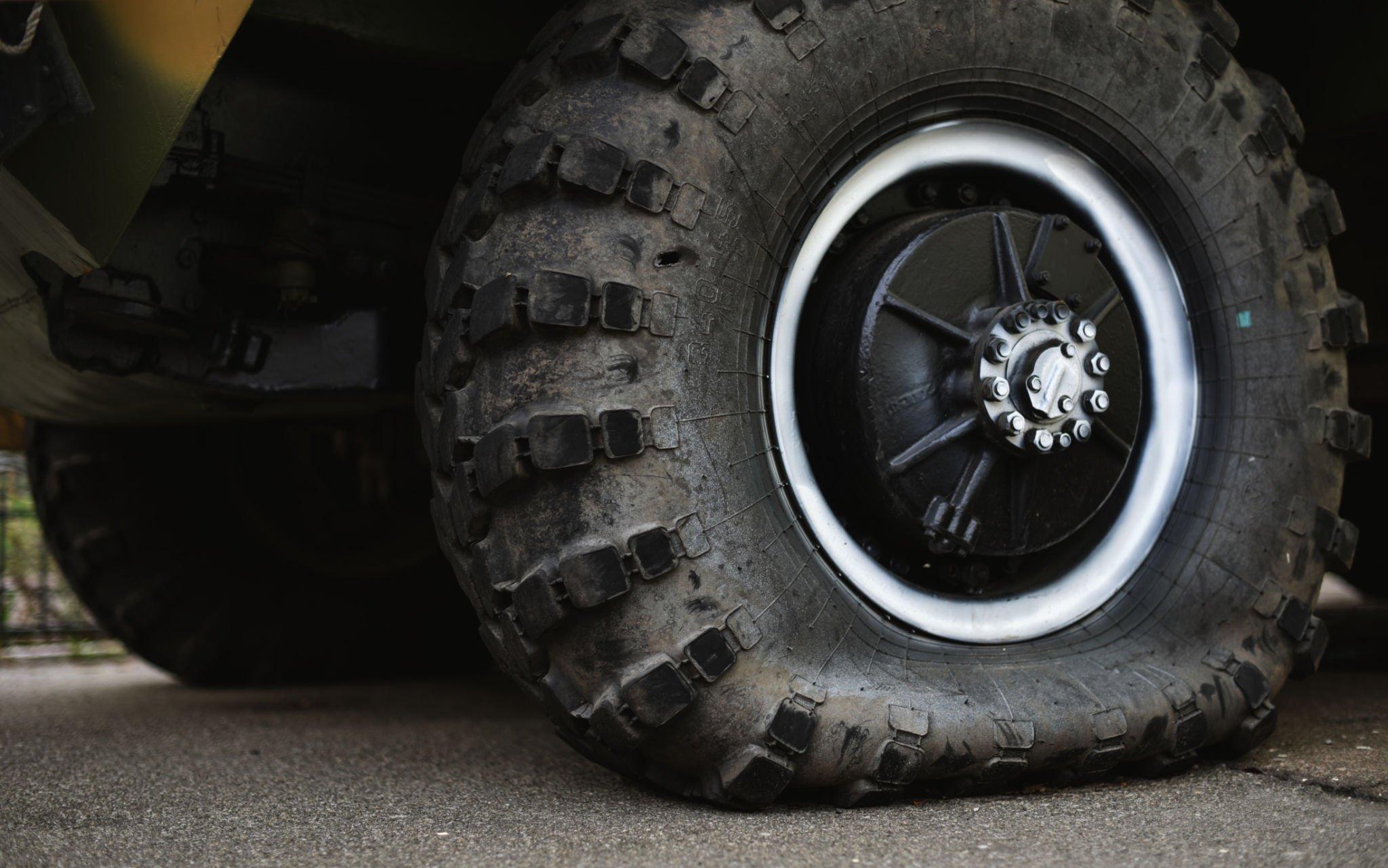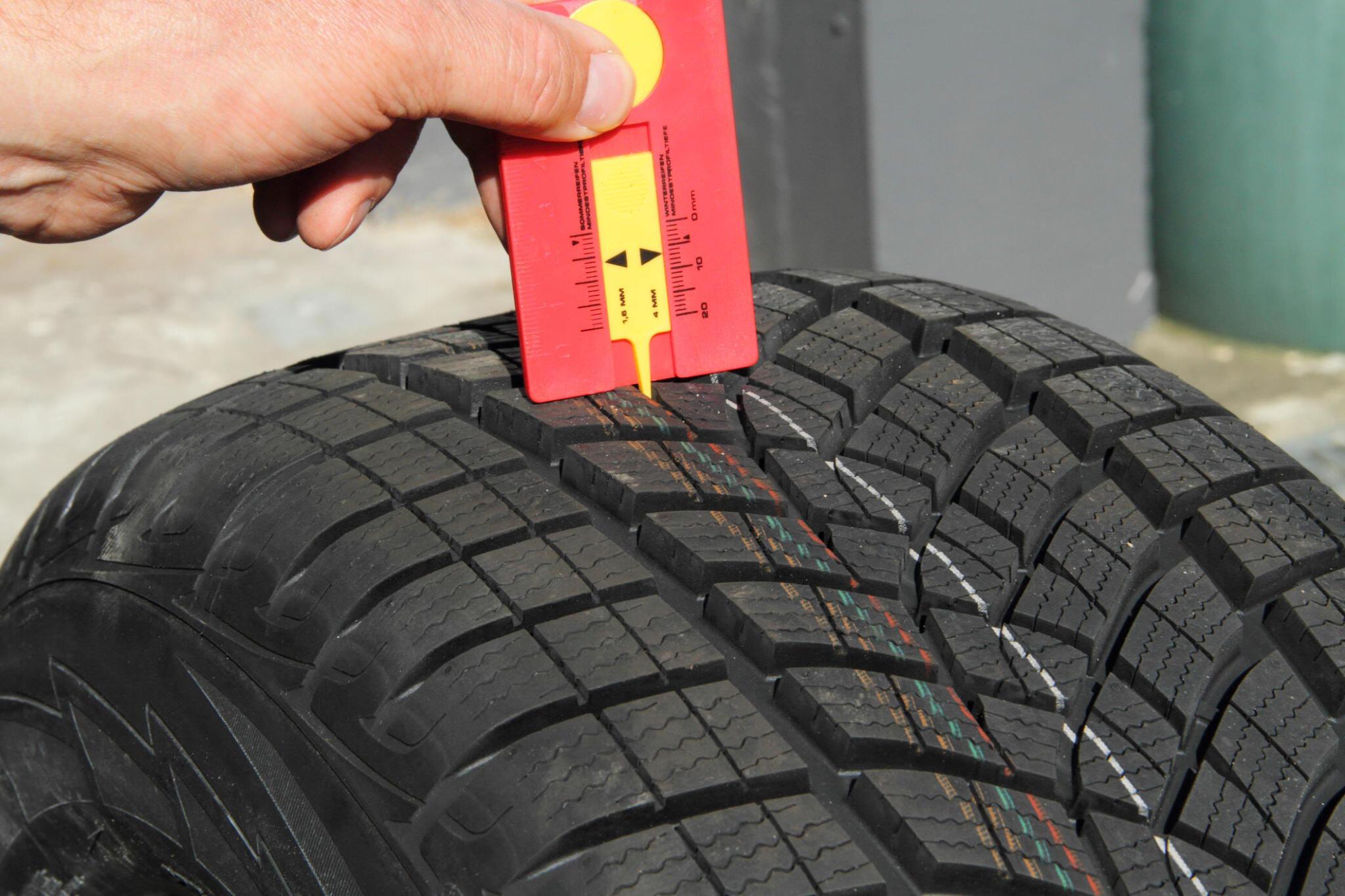Last Updated on April 21, 2024
Introduction to UTQG Rating
The Uniform Tire Quality Grading System (UTQG) is a standardized metric intended to assist consumers in making informed decisions when purchasing tires. Instituted by the United States Department of Transportation (DOT), the UTQG provides valuable insights into three critical aspects of tire performance: treadwear, traction, and temperature resistance.
Definition of UTQG
The UTQG is an alphanumeric code assigned to a tire, which provides information about the tire’s relative performance regarding tread life expectancy, traction ability, and temperature resistance. Here’s what each part of the UTQG rating represents:
- Treadwear: This number indicates the tire’s expected wear relative to a government-mandated test tire rated at 100. A tire with a treadwear grade of 200, for instance, is expected to last twice as long as the test tire under controlled conditions.
- Traction: Represented by a letter grade (A.A., A, B, or C), with A.A. being the highest, this part of the rating reflects the tire’s ability to stop on wet pavement as measured under controlled conditions on specified government test surfaces of asphalt and concrete.
- Temperature: Also expressed as a letter grade (A, B, or C), this rating is based on the tire’s ability to resist heat generation and dissipate it when tested under controlled conditions on a specified indoor laboratory test wheel.
Historical Background
The UTQG was established by the National Highway Traffic Safety Administration (NHTSA), a division of the DOT, in response to the Motor Vehicle Information and Cost Savings Act of 1978. The UTQG intended to provide consumers with standardized tire durability, safety, and performance information.
Since its implementation, the UTQG has undergone various modifications and refinements to improve the accuracy and relevance of the information it provides. For example, in the early years, treadwear ratings were criticized for misleading due to manufacturers’ variability in testing procedures. As a response, regulations and testing methodologies have been periodically updated to enhance consistency and reliability.
Purpose and Importance
The primary purpose of the UTQG is to offer consumers a reliable and comparative measure of tire performance attributes critical to safety and efficiency. The importance of the UTQG ratings can be understood in multiple facets:
- Consumer Empowerment: By providing a government-standardized grading system, consumers are better equipped to compare different tire options beyond price and brand, making choices that suit their specific driving needs and expectations for tire longevity.
- Safety: Traction and temperature grades directly relate to a tire’s safety performance, offering insight into how well a tire can perform in adverse conditions, which can be vital for avoiding accidents.
- Cost Efficiency: Understanding the expected tread life of a tire can help consumers anticipate replacement costs and select a tire that promises a longer lifespan, providing better long-term value.
Overall, the UTQG helps demystify the tire selection process by providing a common language through which tire attributes can be assessed and compared, playing a crucial role in promoting road safety and consumer satisfaction.
Understanding the UTQG Rating System
The Uniform Tire Quality Grading System (UTQG) is a consumer-oriented tool that provides detailed insights into tire performance. It guides consumers in evaluating tire quality and longevity based on three main components: treadwear grade, tread grade, and temperature grade. Understanding these components is crucial for making informed decisions when selecting tires for any vehicle.
Components of UTQG Ratings
The UTQG ratings consist of three primary components, each addressing a different aspect of tire performance:
Treadwear Grade
The Treadwear Grade is a comparative rating based on the tire’s wear rate when tested under controlled conditions on a specified government test track. It is not a projected mileage estimate but rather a relative measure.
- The Scale: The test tire’s treadwear rate is compared to a reference tire graded at 100. Therefore, a tire with a treadwear grade of 200 is theoretically expected to last twice as long as the reference tire.
- Testing Consistency: While tire manufacturers conduct testing according to government-prescribed methods, variations can occur due to changes in testing conditions, making it a somewhat subjective measure.
Traction Grade
The Traction Grade represents the tire’s ability to stop on wet pavement under controlled testing conditions. This grade does not reflect cornering capacity or the maximum limit of grip.
- The Grades: From highest to lowest, the grades are A.A., A, B, and C, with A.A. grade tires offering the best wet pavement traction.
- Testing Procedure: The traction tests are performed on a skid pad with wet surfaces to evaluate the tires’ ability to stop efficiently in slippery road conditions.
Temperature Grade
This grade indicates the tire’s resistance to heat when running at high speeds under a heavy load. It is an essential factor for high-speed driving and can affect the tire’s durability.
- The grades range from A to C, with A being the highest rating. An ‘A’ grade means the tire can perform well at sustained or high speeds.
- Relevance: High temperatures can lead to rapid deterioration of the tire. Thus, a higher grade denotes better durability and performance under thermal stress.
How UTQG Ratings are Assigned
UTQG ratings are assigned by tire manufacturers based on testing performed by standards set by the National Highway Traffic Safety Administration (NHTSA):
- Manufacturer’s Role: Tire manufacturers test the tires and assign the UTQG ratings. The NHTSA can randomly check tires to ensure the manufacturers’ ratings are within the allowed tolerance.
- Test Procedures: Treadwear is assessed through a 7,200-mile road test, traction is evaluated using a skid trailer, and temperature grades are determined by running the tire at increasing speeds until the required standard is met.
Decoding the UTQG Numbers and Letters
The UTQG ratings on a tire sidewall consist of a three-part code that can be decoded as follows:
- Treadwear: This is a numerical value, such as 300, 400, or 500. A higher number suggests a tire may have a longer life expectancy under usual driving conditions.
- Traction: This is indicated by one of the letters A.A., A, B, or C, with A.A. indicating the highest level of traction performance measured under controlled conditions.
- Temperature: Represented by the letters A, B, or C, where A signifies the tire’s superior ability to dissipate heat at higher speeds.
In conclusion, the UTQG rating system is a valuable tool for consumers, offering insights into the expected performance and safety of tires. It’s important to note that while UTQG can provide a baseline for comparison among tires, it is not a substitute for considering other important tire attributes, such as wet handling, snow performance, ride comfort, noise, and overall handling characteristics.
Moreover, these ratings are based on controlled environment tests and may not reflect real-world conditions where driving habits, road surfaces, and weather can affect performance.

The Treadwear Grade
The treadwear grade is a fundamental component of the Uniform Tire Quality Grading System (UTQG) and is a standardized indication of a tire’s longevity. By evaluating the treadwear rate, consumers can understand how long the tire is expected to perform before requiring replacement, which is crucial for budgeting and safety considerations.
Evaluating Treadwear
Evaluating the treadwear involves comparing the wear rate of a tire against a standardized reference tire. The reference tire is set to a baseline grade of 100. Treadwear grading is not an exact prediction of tire life but rather a relative indicator of longevity.
- Factors Affecting Treadwear: Real-world factors such as driving habits, road conditions, tire maintenance, and climate can significantly affect tire life. Treadwear grades provide a comparative tool rather than an absolute measure.
- Tire Comparison: The grading allows consumers to compare tires side-by-side. A tire with a treadwear grade of 200 should theoretically last twice as long as the baseline tire, while one rated 400 should last four times as long, all else being equal.
Testing Methods for Treadwear
Specific testing methods are mandated by the National Highway Traffic Safety Administration (NHTSA) to ensure uniformity in treadwear grading.
- Controlled Testing Conditions: Tires are tested under controlled conditions using a specified course designed to simulate various driving environments.
- Testing Protocol: A vehicle equipped with the tires runs on a 400-mile loop for 7,200 miles. The tires are periodically measured to assess wear and determine the treadwear rate.
- Pilot Testing: The reference tire, graded at 100, undergoes the same test to provide a benchmark for comparison against the test tire.
Treadwear Grade Chart
| Treadwear Grade | Expected Tread Life |
| 100 | Base (Control Tire) |
| 200 | 2x longer than base |
| 300 | 3x longer than base |
| 400 | 4x longer than base |
| 600 | 6x longer than base |
| 700+ | Exceptional tread life |
Note: Treadwear grades are comparative and based on a control tire graded at 100. They do not directly predict the actual miles a tire will last before wearing out.
Interpreting Treadwear for Consumers
For consumers, interpreting the treadwear grade is vital for making informed decisions on tire purchases. It can be seen as a way to gauge value for money and understand how a tire might perform over time.
- Understanding Longevity: A higher treadwear number typically signifies a tire that may last longer, offering potentially more excellent value over its lifespan.
- Budgeting for Replacement: By understanding treadwear grades, consumers can estimate the potential longevity of their tires and plan accordingly for replacements.
- Balancing Performance and Longevity: High-performance tires may have lower treadwear grades as they are often made from softer compounds for better grip, whereas long-life tires might offer less performance but more excellent durability.
Recognizing that the treadwear grade is a guide rather than a guarantee is essential. The actual mileage a tire can achieve is subject to numerous variables not accounted for in controlled tests. Therefore, while treadwear grades are helpful for comparison purposes, they should be considered alongside other factors such as manufacturer warranties, reviews, and specific usage scenarios. Consumers should monitor their tire condition regularly and not solely rely on the UTQG treadwear grade to assess the remaining life of their tires.
The Traction Grade
The Traction Grade within the Uniform Tire Quality Grading System (UTQG) provides a standardized indicator of a tire’s ability to stop on wet pavement. It is a critical component of tire safety, reflecting how effectively a tire can maintain grip under moist conditions. It is a crucial consideration for preventing accidents, especially in adverse weather.
Traction Testing Procedures
The traction test procedures set by the National Highway Traffic Safety Administration (NHTSA) are designed to evaluate how well a tire can perform in wet conditions. These procedures are standardized to ensure that every tire graded is tested under similar conditions for consistency.
- Test Tracks: The testing is conducted on specially prepared test surfaces. These surfaces typically consist of asphalt and concrete sections treated to be consistently wet during the test.
- Controlled Conditions: A test vehicle with tires performs controlled stops from 40 mph on wet surfaces. The distance taken to come to a halt is then recorded.
- Equipment Used: The testing uses a standardized trailer test method or a specified vehicle type to ensure the traction measurements are reliable and can be compared across different tire models and brands.
Significance of Traction in Safety
Traction is directly linked to safety, making the traction grade a vital consideration when selecting tires.
- Wet Braking: Good traction is essential for shorter stopping distances on wet roads. Tires with poor wet traction can significantly increase the risk of hydroplaning and accidents.
- Cornering Stability: While the UTQG traction rating does not precisely grade cornering ability, traction under braking often correlates with general wet road handling characteristics.
- Seasonal Considerations: Traction grades are more critical in regions with frequent rain or snow due to the challenging driving conditions.
Traction Grades Explained
The UTQG assigns traction grades based on the tire’s performance in the standardized tests. Here’s a breakdown of what each phase signifies:
- AA Grade: This is the highest traction grade a tire can receive and indicates excellent wet traction capabilities.
- A Grade: Tires with an ‘A’ grade also have excellent traction and are suited to handle wet road conditions effectively.
- B Grade: A ‘B’ grade is adequate for most situations, but these tires may not perform as well as ‘A.A.’ or ‘A’ graded tires on wet surfaces.
- C Grade: This is the lowest traction grade permissible for sale in the United States, and it suggests that the tire’s wet traction performance is marginal.
Traction Grade Chart
| Traction Grade | Wet Traction Performance |
| A.A. | Superior |
| A | Excellent |
| B | Good |
| C | Acceptable |
Note: Traction grades represent the tire’s ability to stop on wet pavement as measured under controlled conditions on specified government test surfaces of asphalt and concrete. They do not apply to ice, snow, or dry pavement.
When considering traction grades, it’s essential to understand that these ratings are determined under specific test conditions and may not reflect all aspects of real-world driving.
For example, factors like road debris, vehicle type, tire inflation, and driving style can all influence the actual traction performance of a tire. Thus, while the UTQG traction grade is a helpful starting point, it should be used with other tire selection criteria such as expert reviews, manufacturer reputation, and any additional performance features the tire company indicates.
The Temperature Grade
The Temperature Grade is integral to the Uniform Tire Quality Grading System (UTQG). It refers to a tire’s ability to withstand and operate under the heat generated by running at high speed. This grade is crucial because excessive heat can lead to tire failure, which can be dangerous at high rates.
Understanding Temperature Resistance
Temperature resistance in tires is related to their ability to disperse heat without degradation. When a tire rolls under load, especially at high speeds, it generates heat due to friction with the road and flexing of the tire material.
- Heat Build-up: Tires that cannot resist high temperatures may accumulate heat, leading to premature wear, tread separation, or blowouts.
- Rubber Composition: A tire’s rubber compounds and overall design significantly influence how well it can resist heat. Tires with high-temperature grades usually have compounds that dissipate heat more efficiently.
Testing for Temperature Grades
The NHTSA has outlined a specific procedure for testing tire temperature resistance, which all tire manufacturers must follow to ensure their products are safe for public roads.
- Test Speeds: Tires are tested at three sustained speeds for a fixed duration or until the tire fails. The speeds are set at 75 mph, 85 mph, and more significantly, depending on the grade the tire is expected to meet.
- Grade Assignment: A tire starts at the lowest speed test and must maintain its integrity without failure to move to the next speed level. It is assigned the highest temperature grade if it passes all stages without loss.
- Laboratory Conditions: These tests are conducted in controlled environments, ensuring that external factors do not influence the results.
The Role of Temperature Grades in Tire Performance
Temperature grades indicate a tire’s quality and safety performance under high-speed driving conditions.
- High-Speed Performance: A high-temperature grade is essential for tires used in high-speed driving, as they are more likely to retain their structural integrity.
- Durability: Tires with higher temperature grades may offer better long-term durability because they are less prone to heat-related degradation.
- Safety: By choosing a tire with an appropriate temperature grade for their vehicle and driving habits, consumers can use tires that can safely handle the heat generated by their typical driving speeds.
Grading Scale
The grading scale for temperature resistance consists of three levels:
- Grade A: The highest rating a tire can receive, indicating that the tire can withstand heat very well at higher speeds.
- Grade B: This indicates the tire has a satisfactory level of heat resistance and can handle moderate high-speed stress.
- Grade C: The lowest rating permitted for use, suggesting that the tire can only handle minimum accepted standards of high-speed heat resistance.
While the temperature grade is essential when selecting tires, it should not be the sole factor. It’s advised to consider this rating in conjunction with other performance characteristics and follow the manufacturer’s recommendations for tire usage, maintenance, and load capacity to ensure optimal performance and safety. Remember that the UTQG ratings, including the temperature grade, are based on standardized tests and may not represent all real-world driving scenarios. Regular checks and adherence to recommended tire pressures can also help manage tire temperature during use.
Temperature Grade Chart
| Temperature Grade | Heat Resistance |
| A | High |
| B | Intermediate |
| C | Acceptable |
Note: Temperature grades represent the tire’s resistance to generating heat when tested under controlled conditions on a specified indoor laboratory test wheel.
When considering new tires, these charts can serve as a quick reference guide to help you understand what each UTQG rating signifies. It’s important to remember that while these ratings are helpful for comparison purposes, they should not be the sole factor in your decision-making process. Consider your specific driving conditions, vehicle specifications, and personal driving habits.
For a wide selection of tires featuring diverse UTQG ratings, visit Tire Easy, where you can find the right tire with the correct ratings that match your unique driving needs.

Limitations and Criticisms of UTQG
The Uniform Tire Quality Grading System (UTQG) is designed to provide consumers with valuable information regarding tire treadwear, traction, and temperature resistance. However, both industry experts and consumers have noted several limitations and areas of criticism.
Limitations in Testing and Ratings
The testing procedures and the resulting ratings have inherent limitations that can impact their usefulness and accuracy:
- Standardized Conditions: UTQG tests are conducted under particular conditions that may not accurately represent the wide variety of roads, climates, and driving habits in the real world. This can lead to discrepancies between the UTQG rating and actual tire performance.
- Comparability Issues: While the grades allow for comparison between different tire brands and models, they do not directly correlate to actual miles that a tire might last, nor do they account for variations in performance due to different vehicle types or driving styles.
- Testing Parameters: The UTQG testing parameters, especially for treadwear, have been criticized for not being stringent or comprehensive enough to give a fully rounded view of a tire’s lifespan.
Manufacturer Self-Testing and Its Implications
One of the most significant criticisms of the UTQG system is that it relies on manufacturers to test their tires:
- Conflict of Interest: There is a potential conflict of interest since manufacturers may be incentivized to rate their tires favorably.
- Consistency Concerns: The self-testing nature of the system can lead to inconsistencies, as different manufacturers may apply the testing criteria differently.
- Lack of Third-Party Verification: There is no mandatory third-party verification of the results, which means consumers must rely on the integrity of the manufacturers’ testing processes.
Criticisms from Industry Experts and Consumers
Industry experts and consumers have voiced several criticisms regarding the UTQG ratings:
- Outdated Methods: Critics argue that the UTQG testing methods have not evolved sufficiently to reflect modern tire technology and road conditions.
- Misleading Information: Some consumers feel that the UTQG ratings can be tricky, as they may interpret the grades as guarantees of performance, which they are not.
- Oversimplification: There is a belief that the UTQG system oversimplifies complex tire performance characteristics into a few broad categories, which do not capture the nuances of tire functionality.
Despite its intentions to aid consumers in making informed decisions, the UTQG system’s limitations and criticisms suggest that while it can be a helpful tool, it should not be the sole factor in tire purchasing decisions. Consumers must consider various sources, including professional tire reviews, manufacturer information, real-world customer experiences, and UTQG ratings.
Moreover, regulatory bodies and the tire industry continue to discuss ways to improve the UTQG system to serve the interests of consumers better, including updating testing methods and increasing the role of independent testing to enhance the reliability and relevance of the grades awarded.
UTQG and Tire Purchasing Decisions
The Uniform Tire Quality Grading System (UTQG) is significant in informing consumers and influencing tire purchasing decisions. It provides a standardized method of comparing tires, which can be particularly useful for those without extensive knowledge of tire specifications. However, while UTQG ratings are helpful, they should be considered alongside other factors when choosing the right tires for a vehicle.
How UTQG Affects Buying Behavior
UTQG ratings can significantly impact consumer buying behavior by:
- Simplified Comparison: They allow shoppers to quickly compare different tire brands and models on treadwear, traction, and temperature resistance.
- Perceived Quality: Higher UTQG ratings often lead consumers to perceive a tire as having higher quality or better value.
- Cost-Performance Trade-Off: UTQG can help buyers understand the cost and performance trade-offs. A tire with a high treadwear grade may imply a longer life, which could justify a higher price.
Comparing Tires Using UTQG Ratings
When comparing tires using UTQG ratings, consumers should keep in mind that:
- Treadwear Ratings: A higher treadwear rating suggests a tire may last longer, but driving habits, road conditions, and maintenance practices can influence longevity.
- Traction Grades: Traction grades (from A.A. to C) indicate a tire’s ability to stop on wet pavement. A higher grade means shorter stopping distances.
- Temperature Grades: These reflect a tire’s heat resistance at speed. High-performance or summer tires usually have higher temperature grades.
Beyond UTQG: Other Factors in Selecting Tires
While UTQG is a valuable tool, other factors are also crucial in the tire selection process:
- Vehicle Manufacturer Recommendations: Vehicle manufacturers may have specific tire requirements or recommendations crucial for maintaining vehicle performance and safety.
- Driving Conditions: Consideration of the typical driving conditions, such as climate and road types, is essential. Depending on the environment, all-season, winter, or off-road tires may be more suitable.
- Tire Type and Special Features: Some tires offer special features like run-flat technology or reinforced sidewalls for added durability.
- Expert Reviews and Tests: Professional tire tests and reviews often provide a more comprehensive picture of a tire’s performance, including handling, noise, and ride comfort.
- Personal Experiences and Reviews: Consumer reviews can offer insight into tire performance and durability.
- Price and Warranty: Budget constraints and warranty coverage are practical considerations influencing tire choice.
The key takeaway is that while UTQG ratings offer a baseline for comparison, they are not the definitive guide on tire quality or performance. Consumers should use them as a broader research strategy when selecting tires. Discussing tire options with a trusted tire professional who can provide guidance based on individual driving habits and vehicle characteristics is also advisable.
UTQG in Practice: Case Studies
The Uniform Tire Quality Grading System (UTQG) is a comparative tool for assessing tire qualities. However, understanding its practical implications requires examining how these ratings play out in real-world scenarios. The following case studies provide insight into applying UTQG ratings in various situations.
Case Study: Performance in Diverse Weather Conditions
In this case study, we examine a set of all-season tires with a UTQG traction rating of ‘A.’ While the tires are expected to perform well in various weather conditions, their real-world performance is tested in a region with severe winters and wet springs.
- Observations: The tires perform adequately in light snow and wet conditions but fall short in heavy snow and ice, whereas a winter tire with an ‘A.A.’ traction rating would be superior.
- Outcome: Despite a good traction rating, the all-season tires have limitations in extreme weather, highlighting the importance of considering specific weather patterns in tire purchases beyond UTQG ratings.
Case Study: Longevity and Cost-Effectiveness
The second case study focuses on two tire models with different treadwear ratings: one rated 300 and another 600. The expectation is that the tire with the 600 rating would last twice as long as the 300-rated tire, assuming comparable conditions.
- Observations: After several years, the 600-rated tire does show less wear than the 300-rated model, but not proportionally to the ratings. Other factors, such as alignment issues, inflation levels, and driving styles, affect the wear rate.
- Outcome: Cost-effectiveness is not determined solely by treadwear ratings; maintenance and driving habits play crucial roles. UTQG ratings provide a baseline, but they don’t guarantee performance.
Case Study: Racing Tires vs. Commercial Tires
This case compares UTQG ratings of racing tires, typically not rated, with commercial tires used for everyday driving. Racing tires are designed for maximum performance and grip rather than longevity.
- Observations: Racing tires offer superior traction on dry tracks but wear out much faster than commercial tires, with moderate traction ratings but better longevity.
- Outcome: The UTQG rating system does not apply to racing tires since their design priorities differ from commercial tires. UTQG ratings are thus more beneficial for comparing within the same category of tires.
These case studies illustrate that while UTQG ratings can indicate specific tire characteristics, they are not absolute predictors of performance or value. They should be used as one of several tools in assessing tire options. Real-world experience, knowledge of specific driving needs, and professional advice remain vital in making informed tire purchases.
Regulatory Aspects of UTQG
The Uniform Tire Quality Grading System (UTQG) is not merely a set of guidelines; it encompasses various regulatory aspects that mandate compliance and ensure uniformity in tire quality assessment. Below is an exploration of the regulatory framework that governs UTQG.
UTQG Compliance and Legal Requirements
In the United States, the National Highway Traffic Safety Administration (NHTSA), part of the Department of Transportation (DOT), enforces UTQG standards. Compliance with these standards is not optional; tire manufacturers must grade their tires under this system and face legal ramifications for non-compliance.
- Mandatory Testing: Before tires can be sold in the U.S., they must be tested according to UTQG standards and have their ratings on the sidewalls.
- Record Keeping: Manufacturers must keep detailed records of their test results for a period defined by the NHTSA, ensuring accountability and traceability.
- Penalties: Failure to comply with UTQG regulations can result in fines, recalls, and even legal action against tire manufacturers.
The Role of Government Agencies in UTQG
Government agencies such as the NHTSA have several roles in the UTQG framework:
- Standard Setting: NHTSA sets the standards and periodically reviews and updates the testing procedures to ensure they remain relevant and practical.
- Monitoring Compliance: The agency monitors tire manufacturers for compliance with UTQG ratings and can conduct its testing to verify manufacturer claims.
- Consumer Education: It also educates consumers about the meaning of UTQG ratings and how to use them when selecting tires.
International Standards and UTQG Equivalents
While UTQG is specific to the United States, there are international standards that serve similar purposes. The comparison between UTQG and international standards reveals:
- Different Approaches: Other countries, such as the European Tire Labeling Regulation, may not have a direct equivalent to UTQG but will have their own tire grading systems.
- International Coordination: There are ongoing efforts to harmonize tire quality standards internationally, with organizations like the United Nations Economic Commission for Europe (UNECE) working on global frameworks.
- Global Manufacturers: For tire manufacturers that operate internationally, there is a need to understand and comply with different regulatory standards in various markets.
The regulatory aspects of UTQG underscore its significance in the tire industry, ensuring consumers have access to standardized information about tire quality. With the backing of legal requirements and the oversight of government agencies, UTQG ratings provide a reliable benchmark for tire performance. International equivalents to UTQG reflect a global effort to provide transparency and quality assurance in tire manufacturing and performance.

The Future of UTQG and Tire Rating Systems
As with many aspects of automotive technology, the Uniform Tire Quality Grading System (UTQG) is expected to evolve. This evolution is likely driven by technological innovation, regulatory changes, and global trends in the tire industry. Here’s how the future might look for UTQG and tire rating systems:
Technological Advances and UTQG
The intersection of technology and tire manufacturing is set to impact UTQG in several ways:
- Innovative Tires: The development of ‘smart’ tires equipped with sensors that provide real-time data on wear, temperature, and traction could augment or even replace aspects of UTQG.
- Advanced Materials: As new tire compounds and materials are developed, the current UTQG metrics may need to be adjusted to accurately reflect these innovative products’ performance.
- Improved Testing Methods: Technology may enable more precise and consistent testing methods, leading to more accurate and reliable UTQG ratings.
Proposals for Improving the UTQG System
There have been numerous proposals for improving the UTQG system to make it more informative and valuable for consumers:
- Revising Grading Scales: Proposals suggest recalibrating the treadwear rating scale to account for advances in tire durability and updating traction and temperature tests to reflect modern tire performances.
- Enhanced Consumer Information: There’s a push for UTQG to include additional information on ratings, such as how they relate to fuel efficiency, ride comfort, noise, and other performance characteristics.
- Standardization of Testing: Efforts are being made to standardize testing procedures to reduce variance between different tire manufacturers’ ratings and improve consistency.
Global Trends in Tire Rating and Safety Standards
Globalization is influencing tire rating systems as manufacturers and consumers increasingly operate in an international marketplace:
- Harmonization of Standards: There is a trend towards harmonizing tire rating systems across different countries and regions to facilitate international trade and improve global safety standards.
- Environmental Concerns: Environmental impact is becoming a significant factor in tire ratings, focusing on tires that reduce fuel consumption and carbon emissions.
- Emerging Markets: As new markets appear, there is a demand for tire rating systems that cater to different climates, road conditions, and driving behaviors, which may lead to adaptations in UTQG or alternative methods.
The future of UTQG and tire rating systems looks to be one where they become more nuanced and globally integrated. Technological advancements are poised to revolutionize how tire quality is assessed and communicated. Improvement proposals aim to make UTQG more comprehensive and helpful for consumers, while global trends indicate a shift towards international standardization and an increased emphasis on sustainability. As the automotive industry evolves, so will the standards by which tire quality and performance are measured.
Conclusion & Recommendations
The Uniform Tire Quality Grading System (UTQG) has been an integral part of the tire industry, providing consumers with valuable information on tire treadwear, traction, and temperature resistance. This rating system, mandated by the U.S. Department of Transportation, ensures manufacturers maintain a tire safety and performance standard.
- Treadwear: UTQG gives consumers an idea of how long the tires will last.
- Traction: The ratings inform consumers about a tire’s ability to stop on wet roads, contributing to safer driving conditions.
- Temperature: This grade tells the consumer how well the tire can dissipate heat—a critical factor in preventing tire overheat and potential failure.
The UTQG system has undeniably had a significant impact on the tire industry, driving manufacturers to improve their tires’ quality and safety continuously. It has also empowered consumers to make more informed purchasing decisions based on standardized information.
Safety and Performance
Tire safety and performance are paramount considerations for every driver. While UTQG ratings provide essential insights, they are not the sole factors to consider. Consumers must understand how these ratings fit into the larger context of tire performance and align with individual driving habits, vehicle types, and typical driving environments.
Drivers should also stay informed about the maintenance of their tires, including regular checks for air pressure, tire rotation, and alignment, to extend tire life and maintain performance. Being educated on all aspects of tire safety can significantly reduce the risk of tire-related accidents on the road.
Understanding the ins and outs of UTQG and tire safety is crucial, but knowing where to find tires that meet these stringent standards is just as important. That’s where Tire Easy comes in. At Tire Easy, we offer a vast selection of top-quality tires that meet but often exceed the UTQG ratings.
Find Your Perfect Tires Today!
Whether you’re looking for durability performance in harsh weather conditions or want a reliable set of tires that offer comfort and safety, we have you covered. Our easy-to-navigate website allows you to filter tires by UTQG ratings, ensuring you find the perfect match for your vehicle.
Don’t compromise on quality and safety. Visit us now and get the tires that best suit your needs with just a few clicks.
FAQs
What is a good UTQG rating?
A good UTQG rating varies depending on your needs. Generally, a treadwear grade of 300 or above, traction grade A or A.A., and temperature grade A indicate a tire that offers a balanced performance in longevity, grip, and heat resistance.
What does UTQG 720 AA mean?
UTQG 720 AA means the tire has a treadwear rating 720, indicating it should last 7.2 times longer than the baseline tire. The ‘A.A.’ shows the highest traction rating, signifying excellent grip on wet surfaces.
Is higher UTQG better?
A higher UTQG treadwear rating suggests a tire may last longer, but it doesn’t always mean better overall performance. Traction and temperature grades should also be considered to comprehensively understand a tire’s capabilities. What does UTQG 800 mean?
UTQG 800 refers to the treadwear rating, suggesting the tire could last eight times longer than the test tire used as a standard. It doesn’t account for traction or temperature resistance, which are also important.
Is UTQG 700 AA good?
Yes, UTQG 700 AA is considered a good rating, with the tire likely to have a long lifespan due to the high treadwear rating and excellent wet traction capability, as indicated by the ‘A.A.’ traction rating.
How is UTQG calculated?
UTQG ratings are calculated through standardized tests: treadwear is measured against a known control tire over a 7,200-mile course, traction is assessed based on stopping distances on wet pavement, and temperature is determined by the tire’s ability to withstand heat at high speeds.
What is a good UTQG treadwear rating?
A good UTQG treadwear rating is generally 300 or above, indicating the tire is expected to be worn three times, as well as the baseline tire set by the National Highway Traffic Safety Administration (NHTSA).









